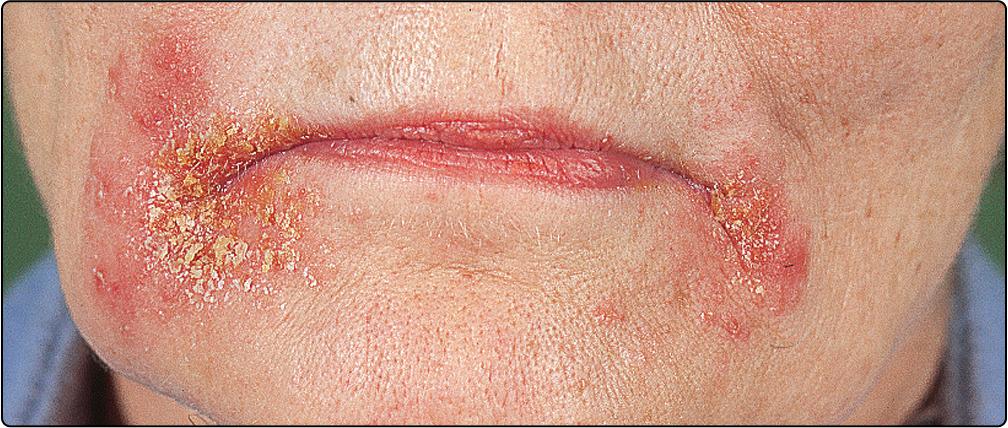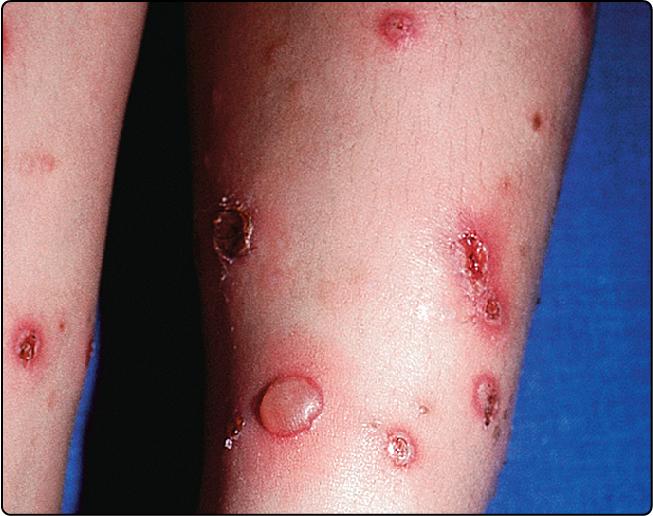Physical Address
304 North Cardinal St.
Dorchester Center, MA 02124
The skin is a barrier to infection but, if its defences are penetrated or broken down, numerous microorganisms can cause disease ( Table 27.1 ).
| Organism | Infection |
|---|---|
| Commensals | Erythrasma, pitted keratolysis, trichomycosis axillaris |
| Staphylococci | Impetigo, ecthyma, folliculitis, secondary infection |
| Streptococci | Erysipelas, cellulitis, impetigo, ecthyma, necrotizing fasciitis |
| Gram-negative | Secondary infection, folliculitis, cellulitis |
| Mycobacterial | Tuberculosis (lupus vulgaris, warty tuberculosis, scrofuloderma), fish tank granuloma, Buruli ulcer, leprosy |
| Spirochaetes | Syphilis (e.g. primary, secondary), Lyme disease (erythema chronicum migrans) |
| Neisseria | Gonorrhoea (pustules), meningococcaemia (purpura) |
| Others | Anthrax (pustule), erysipeloid (pustule) |
Normal skin has a resident flora of usually harmless microorganisms (skin microbiome), including bacteria, yeasts and mites (see also Chapter 5 ). Recent work, utilizing novel culture independent analysis, has identified that the most predominant genera are corynebacteria (22.8%; diphtheroids), propionibacteria (23.0%), and staphylococci (16.8%). Interestingly, there is more similarity in microbial diversity in the same anatomical location between individuals than between different anatomical locations in the same individual. Micrococci, for example, number 0.5 million/cm 2 in the axilla but only 60/cm 2 on the forearm. Some individuals are high carriers.
A third of people intermittently carry Staphylococcus aureus in the nose or, less often, the axilla or perineum. Staphylococci can infect the skin directly or secondarily, as in eczema or psoriasis.
Impetigo is a contagious superficial skin infection caused by either staphylococci or streptococci, or both.
Impetigo is now relatively uncommon in the UK, mainly because of improved social conditions, but it is endemic in developing countries. It generally occurs in children and presents as thin-walled, easily ruptured vesicles, often on the face, which leave areas of yellow-crusted exudate ( Fig. 27.1 ). Lesions spread rapidly and are contagious. A bullous form ( Fig. 27.2 ), with blisters 1–2 cm in diameter, is seen in all ages and affects the face or extremities. Atopic eczema, scabies, herpes simplex and lice infestation may all become impetiginized. Impetigo can be confused with herpes simplex or a fungal infection.


Most localized cases respond to the removal of the crusts with saline soaks and the application of a topical antibiotic (e.g. mupirocin, fusidic acid or neomycin/bacitracin). Systemic flucloxacillin or erythromycin is given for widespread infection. Impetigo caused by Streptococcus pyogenes may result in glomerulonephritis, a serious complication. Methicillin-resistant Staph. aureus (MRSA) carriage (and infection) has increased with the widespread use of antibiotics.
Become a Clinical Tree membership for Full access and enjoy Unlimited articles
If you are a member. Log in here